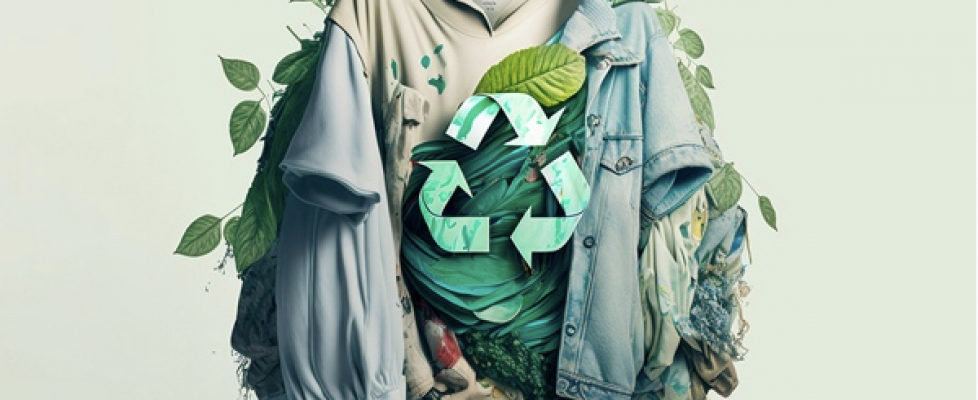Planet
Fashion is a form of self-expression that goes beyond cultural boundaries. It is a dynamic industry that constantly changes, driven by creativity, innovation, and consumer demand. However, as glamorous as the fashion industry can be, a light has been shed on the many impacts it has on our planet. These issues, ranging from the endangerment of ecosystems, the significant emissions of CO2 and ethical practices, are calling for action with the development of new sustainable strategies.
It is reported that the fashion industry is responsible for around 10% of greenhouse gas emissions (Raj & Bajpai, 2022). The majority of these emissions are synthetic fibres, such as Polyester, which are characterised by their non-biodegradability and are not easily broken down in natural ecosystems. Additionally, the spike in the growth of these emissions is due to the high demand for low-priced clothing (Mitterfellner, 2023).
Another way to better understand the relationship between the planet and the fashion industry is through Goal 12 (Responsible Production and Consumption) of the Sustainable Development Goals (SDGs), which seeks to detach economic growth from the escalating use of resources. Findings from a study by Šajn (2019), where ‘Europeans bought 6.4 million tonnes of new clothing per person in 2015’ (Shafie et al., 2021), are a perfect example of how goal 12 was violated. For a society to meet goal 12 of SDGs, they need to encourage individuals to reuse, recycle and buy clothes from, for example, second-hand shops (Thakker & Sun, 2023). In this way, it is possible to engage in a ‘circular fashion economy.’
The circular economy is a model focused on recycling and, therefore, “keeping around” the clothing being produced by the textile industry for as long as possible (Jacometti, 2019). Thus, the waste generated can be minimised, and profitability could also be increased (Thakker & Sun, 2023). Another critical element for a circular fashion economy is understanding the life cycle of a garment, which begins with the design process. The following stages consist of identifying and eliminating factors of the garment produced which could pose an environmental and social threat. These courses of action are carried out with sustainability as the end goal for the garment’s life cycle (Gwilt, 2014).
The triple Bottom line (TBL) is a business strategy that could also improve how fashion industries operate. This strategy emphasises that businesses should put a balance between making money and being socially and environmentally responsible. Therefore, when faced with a business decision, they should consider the cost and benefits of the TBL’s three pillars (People, Planet and Profit) (Lee, 2007).
References:
- Gwilt, A. (2014). A practical guide to sustainable fashion. Fairchild Books, An Imprint Of Bloomsbury Publishing Plc.
- Mitterfellner, O. (2023). Chapter 7- Luxury Fashion and the Sustainable Approach
- Raj, M. M., & Bajpai, P. (2022). Mathematical Analysis of the Environmental Impact of Throwaway Fashion. European Journal of Sustainable Development, 11(4), 211-211.
- Shafie, S., Kamis, A., Ramli, M. F., Abu Bedor, S., & Ahmad Puad, F. N. (2021). Fashion Sustainability: Benefits of Using Sustainable Practices in Producing Sustainable Fashion Designs. International Business Education Journal, 14(1), 103-111. https://doi.org/10.37134/ibej.vol14.1.9.2021https://link.springer.com/article/10.1007/s11356-023-29453-1
- Thakker, A. M., & Sun, D. (2023). Sustainable Development Goals for Textiles and Fashion. Environmental Science and Pollution Research, 1-21.
- Jacometti, V. (2019). Circular Economy and Waste in the Fashion Industry. Laws, 8(4), 27. https://doi.org/10.3390/laws8040027
- Lee, K. M. (2007). So what is the ‘triple bottom line’. International Journal of Diversity in Organisations, Communities and Nations, 6(6), 67-72.
